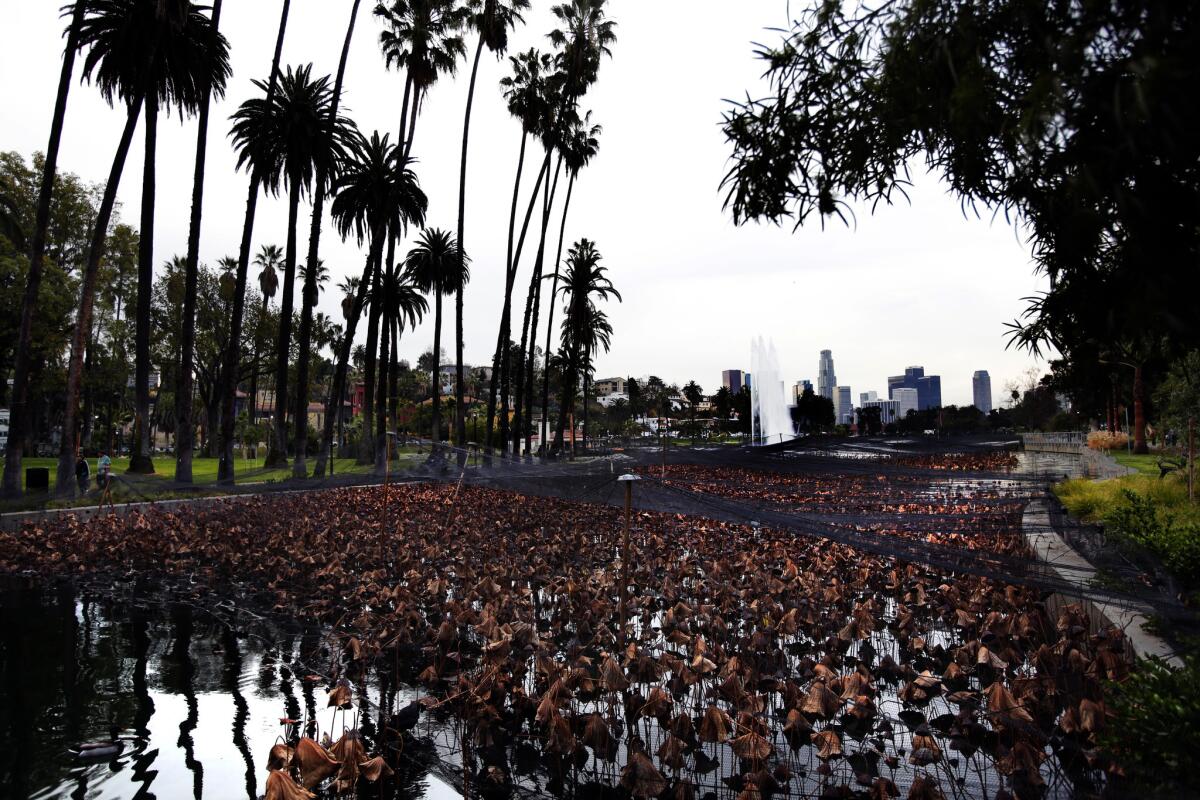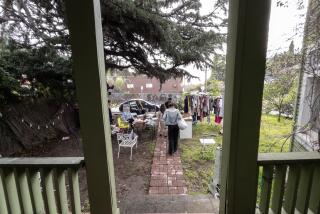Did the lotus plants at Echo Park Lake die? Experts say no

When Echo Park Lake reopened earlier this year after a $45-million makeover, locals flocked to see the newly installed lotus plants, which were making their return to the lake after a mutiyear absence.
So this winter, some passersby have looked at the lake and become alarmed. For weeks now, the bright green lotus leaves that once shot into the air have become brown and wilted. The bed of flowers now droop onto the water like a sea of broken miniature umbrellas.
The scene has left some residents and visitors wondering: Did the plants die again?
But experts say there is nothing to fear.
“The lotus are deciduous,” said Randy McDonald, the man who sold the city more than 300 of the plants for the lake restoration. “They grow part of the year and the other part of the year they’re dormant .… The lotus are going to come back.”
The flowers’ health is a sensitive subject to locals who have already watched them die.
As recently as 2005, the lotuses stood five feet high and spilled onto the shore. But about seven years ago, the flowers started to shrivel and the leaves began to brown. By 2008, they had disappeared.
Some people blamed the lake’s dirty water, others accused natural predators — fish, turtles and crayfish. A crew of biologists did a study, but they never pinpointed a cause.
The annual Lotus Festival carried on without its main attraction, then took a sabbatical, then returned again.
But the plants were restored recently under the veil of black protective mesh and hundreds of Angelenos turned out in June to celebrate the rebirth.
June is around the time lotuses get their first flowers, according to Virginia Hayes, a lotus expert who consulted on the lake’s restoration project. They continue to bloom into the summer, she said, then, in the winter, the top of the plant “turns brown and goes away.”
“In nature they might wither and fall into the bottom of the pond like fertilizer,” said Hayes, a curator at the Ganna Walska Lotusland garden in Santa Barbara. “They are native to habitats that have real winters .… They have evolved to go dormant then when the conditions are unfavorable for growth above the water. They still do that even if we plant them in California.”
Hayes said the growth the plants achieved this year was “amazing” and McDonald expects the plants “to come back with an intensity that will be superior to what we saw before.”
The experts expect new leaves to sprout up in late March or early April. By summertime, they said, the flowers will bloom again.
“Lotus are happily ever after sitting underneath the water … just waiting for spring to come,” McDonald said.
ALSO:
Jahi McMath’s family celebrates Christmas at the hospital
Cookie Project spreads Christmas cheer to L.A.-area workers
Hot weather breaks Christmas records in Southland; more on tap
Twitter: @MattStevensLAT
More to Read
Start your day right
Sign up for Essential California for news, features and recommendations from the L.A. Times and beyond in your inbox six days a week.
You may occasionally receive promotional content from the Los Angeles Times.







